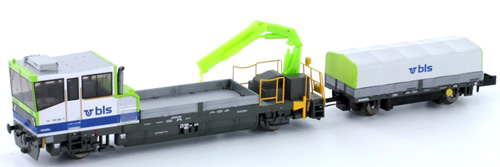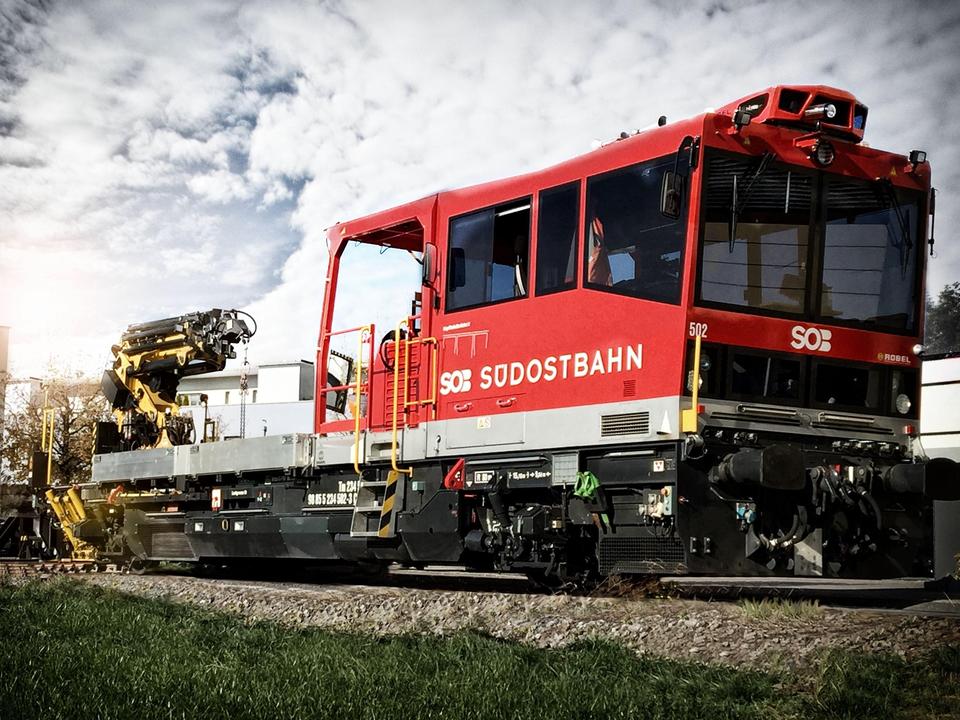Model Information: Non-motorized or motorized (with trailer)
DCC Information: NEM 651 6-pin socket for the motorized version (with trailer)
Prototype History: Traction is the strength of the track car 54.24. Its drive concept is based on that of the track car 54.22, but differs by the use of two synchronously controlled engine-transmission units. Thus, it meets the requirements of shunting and transfer traffic and beyond all the tasks of a construction vehicle. The tracked vehicle is capable of handling high towing loads and to transport the machine, equipment and materials required at the construction site by means of a loading area and loading crane. On site, it can be used to support the work, thanks to the large number of additional accessories available. The equipment is made according to customer requirements. Thanks to different body variants, such as the use of different cranes, it meets the diverse requirements of construction sites. The combination of power for traction and flexibility in work makes the track car 54.24 a dealen and especially economical construction vehicle. The Type 54 / TM 235 is used by many railway companies in Europe, including Germany, Switzerland, Austria, Denmark and Belgium.
Drive: 2-axle-drive hydrostatically, multiple traction capable, 12-cylinder diesel engine 750 kW
Max. driving speed: 100 km/h
Weight: 45 t
Payload: approx. 5 t
Drive: 2-axle-drive hydrostatically, multiple traction capable, 12-cylinder diesel engine 750 kW
Max. driving speed: 100 km/h
Weight: 45 t
Payload: approx. 5 t
Road Name History: The Bern-Lotschberg-Simplon railway (BLS), known between 1997 and 2006 as the BLS Lotschbergbahn, was a Swiss railway company. In 2006 the company merged with Regionalverkehr Mittelland AG to form a new company called BLS AG..
The Bern-Lotschberg-Simplon railway was the largest standard gauge network on the Swiss Railway system apart from the Swiss Federal Railways. The railway had not been built at the time that the Federal government took control of the five big Swiss standard gauge railway companies in 1902 and so it led a separate existence, being considered the largest of the Swiss "private" railways, although the majority of its capital was owned by the cantonal government of Bern, with the Confederation holding about one fifth.
From Wikipedia
The Bern-Lotschberg-Simplon railway was the largest standard gauge network on the Swiss Railway system apart from the Swiss Federal Railways. The railway had not been built at the time that the Federal government took control of the five big Swiss standard gauge railway companies in 1902 and so it led a separate existence, being considered the largest of the Swiss "private" railways, although the majority of its capital was owned by the cantonal government of Bern, with the Confederation holding about one fifth.
From Wikipedia
Item created by: gdm on 2020-05-30 17:29:25
If you see errors or missing data in this entry, please feel free to log in and edit it. Anyone with a Gmail account can log in instantly.
If you see errors or missing data in this entry, please feel free to log in and edit it. Anyone with a Gmail account can log in instantly.











